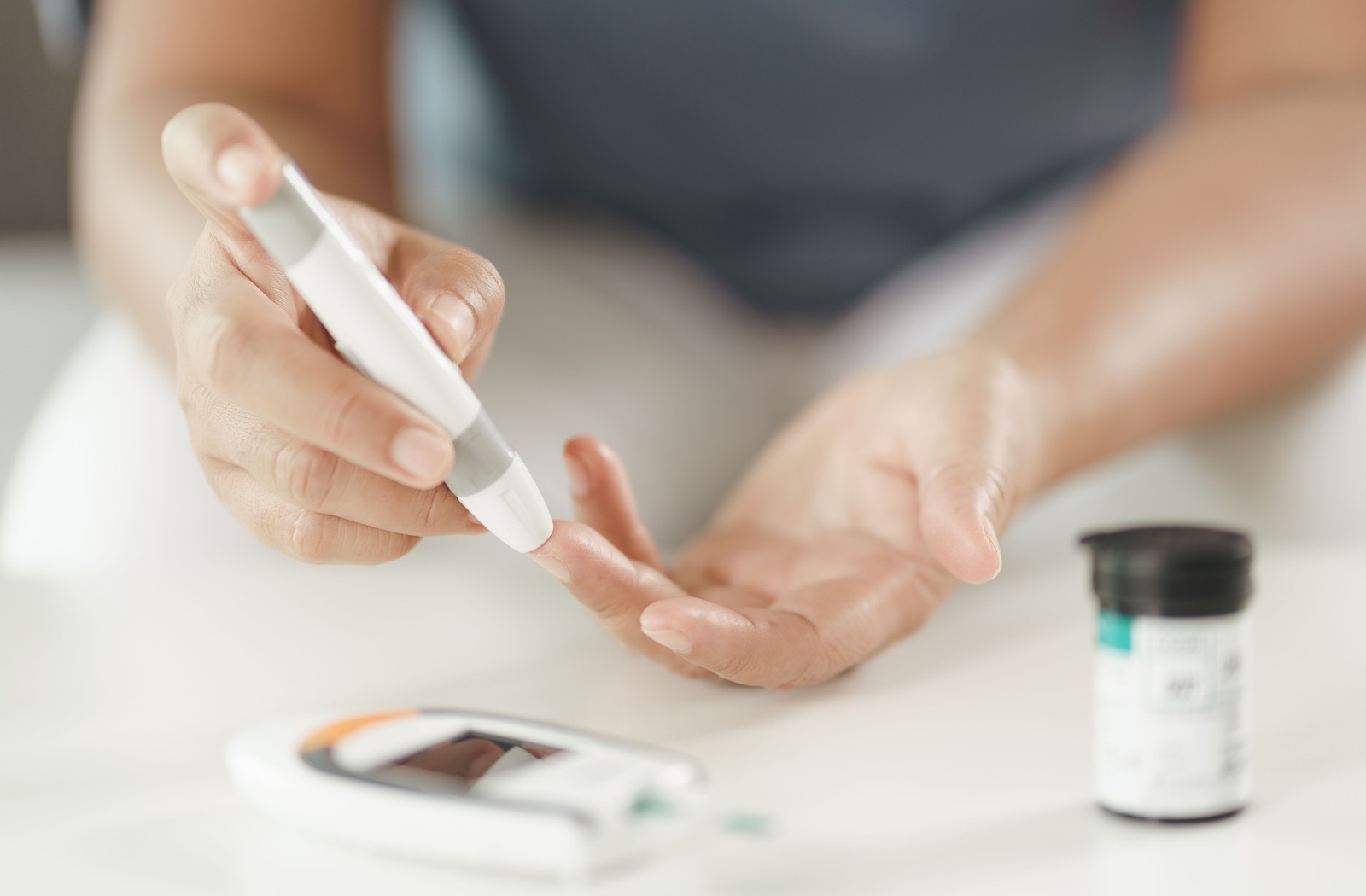Diabetes can have many effects on your vision. One common eye condition caused by diabetes is diabetic retinopathy. Diabetic retinopathy is an eye disease caused by high blood sugar, which leads to blockages in the blood vessels in the eyes. If left untreated, diabetic retinopathy can cause some serious side effects, including vision loss.
Luckily, there are many treatments available to prevent or slow down the progression of diabetic retinopathy. However, it is important to treat diabetic retinopathy early, as it cannot be completely cured or reversed.
What Is Diabetic Retinopathy?
Diabetic retinopathy is an eye disease that occurs due to high blood sugar levels. High blood sugar levels can lead to thickening and blockage of the blood vessels in the eyes. These damaged blood vessels prevent adequate blood from flowing to the retina.
This lack of blood on the retina can lead to retinal swelling and a condition called macular edema. Macular edema happens when damaged blood vessels leak fluid into a part of the retina called the macula. Both retinal swelling and macular edema can lead to blurry vision.
As diabetic retinopathy progresses, it turns into proliferative diabetic retinopathy (PDR). In PDR, the eye may attempt to grow new blood vessels to compensate for a lack of blood flow. However, high levels of blood sugar can lead these new blood vessels to be incredibly fragile.
These fragile blood vessels rupture easily, leading to blood entering the eye, and blocking vision. Another side effect of PDR is an increased level of scar tissue in the eye from these fragile blood vessels. This scar tissue can cause the retina to detach from the back of the eye, leading to either blurry vision, or a loss of vision.
While blurry vision is one of the most common symptoms of diabetic retinopathy, a variety of symptoms can occur due to this condition. Some other symptoms of diabetic retinopathy include:
- Losing vision
- Vision that sometimes changes from blurry to clear
- Dark or blank spots in your field of vision
- Loss of or faded color vision
- Increased number of floaters in vision
When diagnosing diabetic retinopathy, your optometrist will use a variety of tests to assess your eyes. Some common tests used when examining for diabetic retinopathy include:
- A common visual acuity test
- Tonometry tests to analyze pressure in the eye
- Fluorescein angiography can be used to examine the blood vessels in the eyes
- Pupil dilation exams are used to examine the eyes for a variety of eye diseases
- Optical coherence tomography and ophthalmoscopy tests are used to closely examine the retina
Treatments for Diabetic Retinopathy
It is important to consult your optometrist and your doctor to find the right diabetic retinopathy treatment for you. Some treatments for diabetic retinopathy include:
- Diabetes management
- Medications
- Laser therapy
- Surgery
Diabetes Management

In the early stages of diabetic retinopathy, the condition can be managed through common diabetes management techniques. The most important aspect of diabetes management is monitoring and keeping blood glucose levels within a normal range. This can be done through diet and by using diabetes medications, such as insulin.
Other ways to manage diabetes include following a healthy diet (as recommended by your doctor), consistently exercising, and quitting smoking.
Medications
Some medications can be used to help manage diabetic retinopathy such as blood pressure medications and those used to manage retinal diseases.
Anti-VEGF medications help slow irregular blood vessel production and macular swelling and are used to treat diabetic retinopathy. Steroid injections in the eyes may also be recommended to treat diabetic retinopathy.
Laser Therapy
Photocoagulation is a laser therapy procedure used to treat diabetic retinopathy. In this procedure, lasers are used to seal off leaking blood vessels to reduce swelling in the retina and macula.
Laser therapies may also be used to slow and stop the growth of new, weak blood vessels, which can help with symptoms of diabetic retinopathy.
Surgery
At the more advanced stages of diabetic retinopathy, optometrists may recommend surgery. This surgery is called vitrectomy. In a vitrectomy, the liquid and blood from the back of the eye are removed to alleviate the pressure they put on the retina.
Finding the Right Treatment for You
More than 50% of people with diabetes will develop diabetic retinopathy, and anyone with any kind of diabetes is at risk of developing it. Due to the prevalence of diabetic retinopathy in individuals with diabetes, it is important to diagnose and treat it early on.
The best way to diagnose and monitor the condition is to attend annual comprehensive eye exams. Optometrists may be able to detect the signs of diabetic retinopathy before you even know you have diabetes.
At Eye Care Center of Colorado Springs, we use advanced diagnostic imaging tools like Optos retinal imaging and Optical Coherence Tomography to carefully inspect your retina for signs of the condition.
If you have diabetic retinopathy, there are steps you can take for clearer, more comfortable vision By booking an appointment with Eye Care Center of Colorado Springs, we can help you find a personalized treatment plan to alleviate symptoms and promote healthy vision. Give our experienced team a call today.


